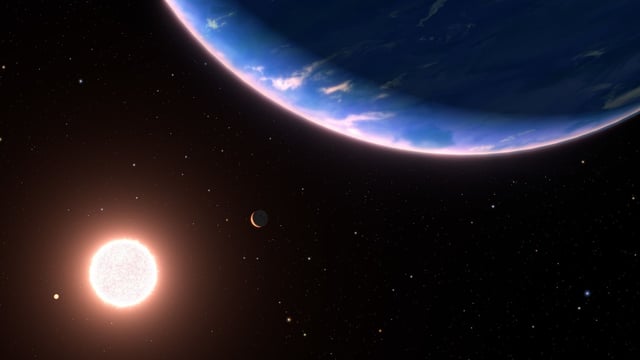Overview
- Astronomers using the Hubble Space Telescope have detected water molecules in the atmosphere of a small exoplanet named GJ 9827d, making it the smallest exoplanet found to have water vapor in its atmosphere.
- The planet, which is about twice Earth’s diameter and 97 light-years from Earth, is unlikely to host any type of life due to its high temperatures that would turn a water-rich atmosphere into scorching steam.
- The research team is unsure whether Hubble picked up on water vapor traces within a puffy, hydrogen-rich atmosphere or the planet has a water-rich atmosphere because the host star evaporated GJ 9827d’s original hydrogen and helium atmosphere.
- The exoplanet completes a single orbit around its host star every 6.2 days, and was observed during 11 transits, or times when the planet crossed in front of its star during orbit, over three years.
- Astronomers have already observed GJ 9827d with the Webb telescope to search for water and other types of molecules, and that data will be shared in the future.
